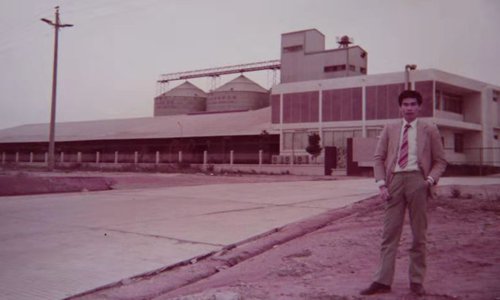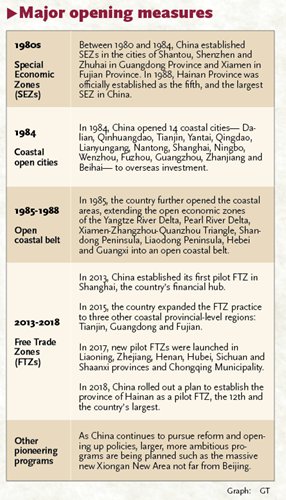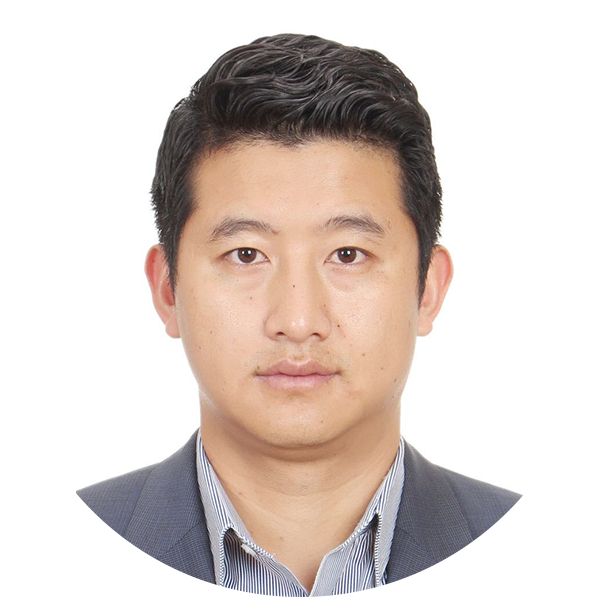
Chen Jianli poses for a picture in front of Chia Tai Conti Group's newly built factory in Shenzhen, South China's Guangdong Province in 1983. Photo: Courtesy of Chen Jianli
When an ambitious, young Chen Jianli arrived in Shenzhen, South China's Guangdong Province in the spring of 1983, determined to make a living outside of his poverty-stricken hometown of Shantou, he was immediately brought back to reality. He found himself in another desolate place that was little different from his hometown or most other cities in the country. He developed a sense of dread and fear.
"Nobody knew how to build a special economic zone. Nobody knew what was coming. Everyone, even local officials were scared," Chen, now in his late 50s, told the Global Times. "No one could have imagined what we have today."
Chen is now a manager of the company he has been working for his entire professional life, and is earning a comfortable living. Shenzhen, which was a small village, meanwhile, has become an economic powerhouse in China and world class city, while the country is now the world's top trading country and second-largest economy.
Chen was one of the first migrant workers to arrive in the suburbs of the city shortly after the Chinese government decided to set up one of the country's first SEZs in Shenzhen. The goal was to attract foreign investment and nurture domestic industries - a bold decision that posed a great deal of uncertainty for Chen and a nation that had suffered years of political turmoil and economic isolation. The stakes could not have been higher and the fear of an unknown future was indescribable.
But the ship had sailed and there was no going back for the country.
Chen got a job with the Thailand-based Chia Tai Conti Group, which had just received the first license ever issued to a foreign company to operate in the Chinese mainland.
"It was not an easy time," he said, emphasizing the word NOT. "There was literally nothing there. No restaurants. No stores. No roads. No buses. No cinema. Even water was hard to come by."
Chen had to sleep with several other coworkers on a huge bed in a simple shelter made of bamboo. He took quick, cold showers with water that was trucked in from a nearby city. He shared his food with flies and spent his leisure time watching imported TV shows that he couldn't fully understand on a small TV the company brought from neighboring Hong Kong.
Nature also didn't help. On September 9, 1983, a typhoon destroyed the newly built facilities, equipment and finished products. "That was probably the hardest time," Chen said.
Meanwhile, the disaster turned into a positive story about time and efficiency. Following the typhoon, local newspapers reported how quickly the company was rebuilt after receiving compensation from its insurance company. It reflected what became known as the spirit of the Shenzhen, a time of dogged determination and sacrifice that spearheaded a period of unprecedented economic growth. Its motto was: "Time is money. Efficiency is life."
"We absorbed that sentiment and truly devoted our lives to work, which in this day and age not many people can imagine," Chen said.
From his first job as an office worker, Chen has since held dozens of positions at the company, including carpenter, sales person and manager. He has been with the company 36 years - and is its longest serving employee.
Today, Chen has renewed his passion in photograph and is keen to share old stories and pictures. He has become a face of not only the company but of China's 40 years of reform and opening-up.
"It has been a truly unbelievable experience. It's a real miracle when I think about how we got here. We really went through uncharted waters by only feeling the stones under our feet," said Chen quoting a phrase made famous by Deng Xiaoping, the revered architect of China's reform and opening up policy. "We were part of the experiment that the entire country was counting on us," Chen said.
By any measure, the experiment has been an unimaginable success. SEZs and various economic development programs have been set up in cities across the country. And as China continues to pursue reform and opening up policies, larger, more ambition SEZs are being planned such as the massive new Xiongan New Area not far from Beijing, and the Hainan Free Trade Zone that will encompass all of China's most southern province.

Global impact
The experiment was not only meant for China. Today a growing number of developing countries, particularly those in Africa, have adopted China's SEZ model of industrial development.
It's because of workers like Chen, that those in Africa can see a clearer path. Stephen Chelugui, a 33-year-old professional from the Kenya's Eldoret, has no dread about the future as his city starts to build the first privately-operated SEZ in his country.
"There is only optimism, no fear," Chelugui told the Global Times. He immediately applied for a job after learning about the project from a friend last year. "It has been the most exciting thing here. It has already changed people's lives," he said, adding that the special zone has already created a lot of jobs for local people, who, like those in Shenzhen decades ago, have nothing but small fields that do not produce much income.
Currently there are more than 400 local residents working on the construction of the SEZ, and once it's completed it may hire as many as 40,000 people, according to Chelugui, who is an assistant business supervisor on the project.
"It will certainly change our lives and our hometown forever," said Chelugui.

